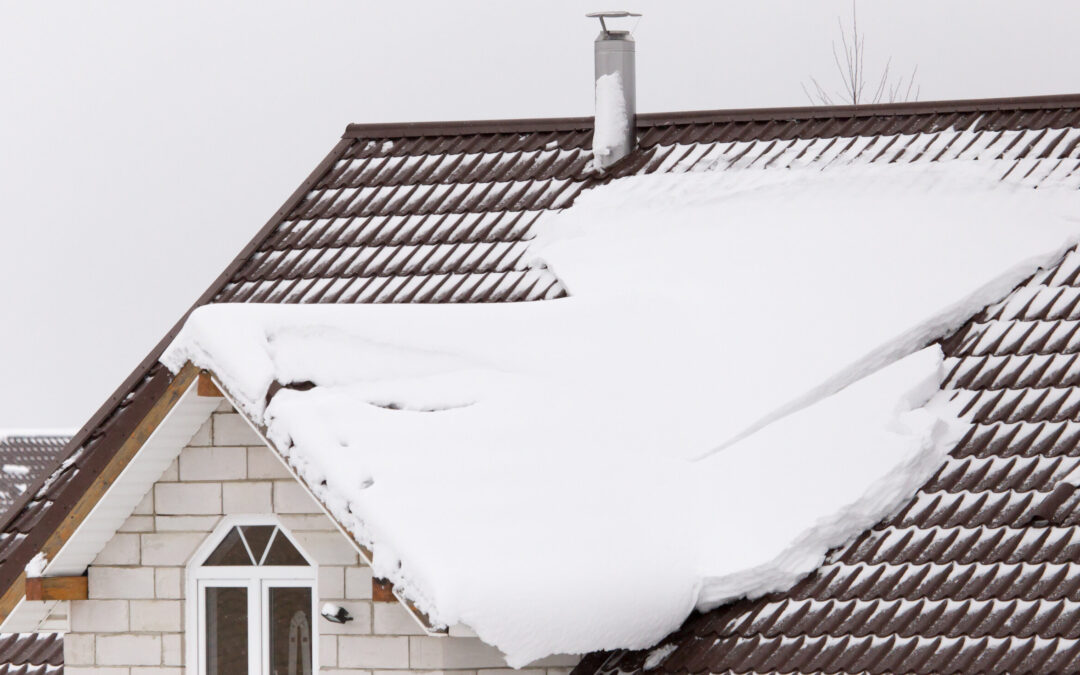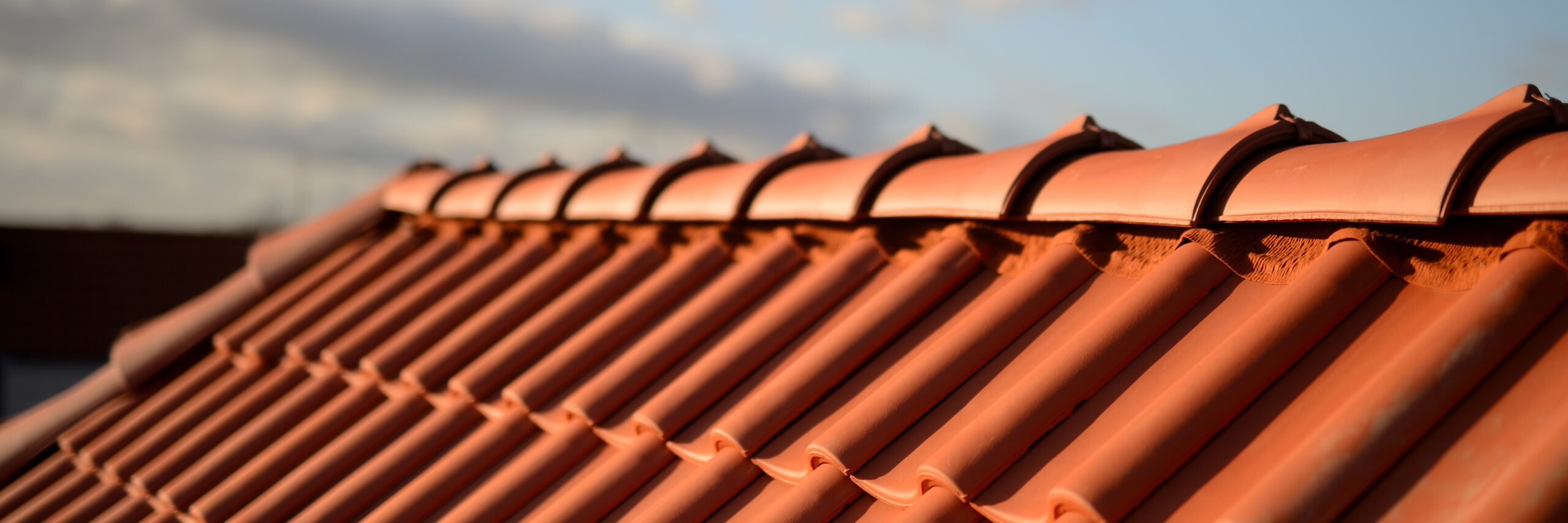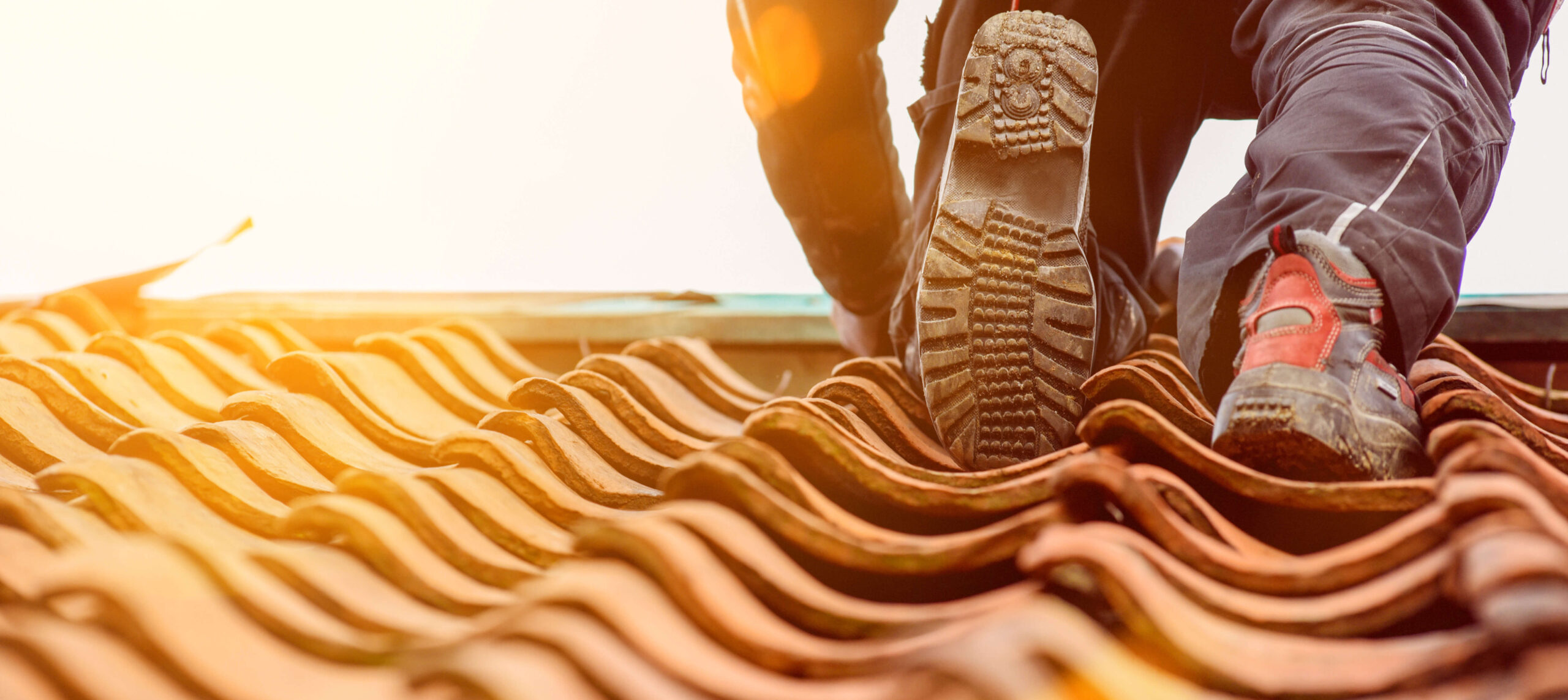Preparing Your Roof For the Winter Months

Protecting your roof, your home, and yourself during the coldest months of the year is very important. Poor roof care and maintenance can lead to potentially disastrous and dangerous conditions if not regularly attended to. Unfortunately, this time of year with its cold weather and snowy or rainy conditions can be tough on a house, particularly the roof. To prevent wear and tear and enjoy the winter without disaster, here are some essential tips for preparing your roof for freezing winter conditions.
Make Sure Your Trees are Maintained
Poorly cared for trees can pose one of the biggest dangers to a roof, especially during the winter. A fallen limb or branch, or even the tree itself, can cause catastrophic and scary damage. To prevent this from happening, always ensure trees on your property have been well maintained and trimmed heading into the winter season. This is particularly important towards the end of the year when snow, thunderstorms, and high wind conditions are more likely to down poorly cared for trees.
Inspect Your Roof Insulation
You can easily lose massive amounts of heat from your home due to poor or aging insulation. Not only will this cost you money and waste huge amounts of energy, but nobody wants a cold house during the winter. As the weather starts to cool, make it a priority to check your roof and insulation, making sure there are no significant gaps or that the insulation isn’t old and worn.
Clean Your Gutters
Cold weather brings with it stormy, windy conditions, which quickly clog up gutters and drains with fallen debris and leaves. Cleaning drains each season is advisable, but especially during the wintertime when drainage is vital. If water cannot efficiently drain away from your roof, it could cause serious damage. Standing water can ruin shingled and cause rot, which is a dangerous situation for a roof. Not to mention, pools of water on a freezing cold roof can lead to dangerous ice dam formation. Ensure those gutters are clear of grime and gunk to enable them to effectively drain water away from your home.
Check Your Flashing
Flashing is a thin piece of impervious material, typically installed around joints or corners on a roof. Flashing has one major job, and that’s to prevent roof leaks. Leaks, even minor ones, can cause problematic water damage, especially over time. Flashing that’s seen better days should be repaired or replaced before the onset of snow and wet weather. Freezing temperatures, rain, strong wind, and damp conditions can cause your flashing to become corroded or damaged, which is why regular inspections are vital.
Do a thorough examination of shingling
Storms are not the friend of a shingled roof. Although shingles tend to be quite hardy, they will eventually and inevitably undergo some damage. That damage is most likely to occur during the winter months. Loose or missing shingles leave your house vulnerable to the elements and can lead to water damage or dangerous conditions. Fortunately, shingles are very quick, easy, and cheap to replace. It’s much less expensive to spend the money on repairing some worn shingles than it is to fork out for more severe damages.
Rooves protect your home and, in turn, they also protect you and your family. But although we often let roof maintenance slip our minds, it’s critical that your roofing is taken care of. Cold weather isn’t great for a roof, but taking these simple steps to keep it in the best condition possible will pay off in the long run. Roof damage can be very expensive to fix, which is why it’s never advisable to forgo proper regular maintenance.
What You Need to Know Before Installing Solar Panels On Your Roof


Solar panels are rapidly increasing in popularity, as more and more people are becoming increasingly environmentally aware and choosing solar panels as a way of reducing their long term electricity costs. With solar power becoming more affordable for the average person, it’s easy to see why it’s a smart choice as a means to power your home or business. And while solar panels are relatively accessible, there are some things that should be considered before you install them on your roof.
Make Sure There’s Enough Sun
First things first, in order for solar panels to work well you need one thing… sun! This sounds like an obvious point to make, but not all roofs are created equal when it comes to the amount of sun exposure they get. Make sure that your roof is exposed to enough bright sunlight daily to make the installation of solar panels worth it.
The Condition Of Your Roof
Before considering a solar panel installation, you need to take a look at the condition of your roof. If your roof is older or is in need of repairs, it probably isn’t a great idea to install solar panels before you get those taken care of.
The Type Of Roof
The roofing materials used on your house can make a difference when it comes to solar panel installation. Concrete shingle tends to be the best and easiest for installation. Other types of roofing materials that can accommodate solar panels include:
- Composite
- Tile
- Metal
- Tar
- Foam
- Torch-down
- Wood Shake
- Gravel
- Tar
It is possible to install solar panels on almost every type of roof, however, some materials may require more complex installation or maintenance. Make sure to consult a contractor if you are unsure about the materials used on your roof.
The Shape Of Your Roof
There are many different sizes and shapes to roofs, and solar panels can work well with most kinds, but you do need to take the size of your roof into consideration. If the area of your roof is too small you may not be able to install enough solar panels to get a good return on your investment.
Maintenance
After the installation of your solar panels, you will need to perform regular maintenance on both the panels and the roof underneath. Ensure your roof is in good condition before you install your panels, and then keep up with the maintenance work. Make sure that regular upkeep is something you can access and afford.
Consider The Extra Weight
It’s very important to make sure that your roof can handle the extra weight load of solar panels. Have a professional inspect your roof and give it the all-clear before you consider installation, as the extra weight could cause a weaker roof to collapse, which can be very dangerous.
Don’t Forget About Rain
Typically, when it rains, the water runs directly down your roof, into your gutters, and drains away from your house. However, the installation of solar panels means that some equipment can get in the way and divert rain flow to other areas of the roof. This has the potential to lead to leaks or mildew, which can cause severe damage to your roof and threaten its integrity. Make sure to have a contractor take a look at your solar panel installation to ensure water is still able to run off your roof properly.
All in all, solar panels can be a fantastic way to generate electricity for your home or business without damaging the environment. They can also be a very cost-effective energy solution in the long run. However, make sure you set yourself up for success before your solar panel installation to ensure your roof is in good condition and you can get the maximum return on your solar investment.
Remember, starting with a poorly maintained, weak, or old roof can be dangerous, so please consult a professional contractor prior to installation to ensure the conditions of your roof are safe.
Pros and Cons Of Asphalt Shingle Roofing


There are numerous different types of roofing materials that can be used when building a new home or replacing an existing roof. While all roofing materials have their pros and cons, and while there are a few different types of shingles, asphalt shingling is the most commonly used material for residential roofs.
With a lifespan of approximately thirty years, cheap installation costs, and low maintenance, it’s easy to see why asphalt shingling is such a popular choice. However, when choosing what material to use for your roof, it’s important to consider a number of different aspects to make sure that you are making the right choice. If you’re considering an asphalt shingle roof, here are the pros and cons that you should be aware of.
Pros Of Using Asphalt Shingle Roofing
Affordability
Asphalt shingles are the most affordable roofing material available. They’re easy to find, and their ease of maintenance and installation means that they are affordable to install as well as upkeep.
Versatility
Asphalt shingles are very versatile, adapting easily to different applications, which is one of the key reasons why they are so widely used on various types of housing and buildings. They even work well on steep-sloped structures.
Installation
The installation process for asphalt shingles is simpler and quicker than most other types of roofing materials. They’re relatively uncomplicated to cut, fasten, and fit. Furthermore, they don’ts require any special materials or accessories for edges, vent flashings, or chimneys.
Low Maintenance
Asphalt shingling is not only easy and affordable to install, but low maintenance requirements also lend to the popularity of this type of material. They can be easily and safely walked on without risk of damage, and any shingles that do become damaged are simple and cheap to replace.
Energy Efficient and Environmentally Friendly
Although not always the case, asphalt shingle technology has improved over the years, making them more environmentally friendly and recyclable. Additionally, they can have cool roof technology, which can lower your energy bills by reducing the amount of heat that is absorbed by your roof.
Other Pros
There are a number of other miscellaneous pros to asphalt shingling. They come in a variety of sizes and colors, they’re light-weight and fire-resistant.
Cons Of Using Asphalt Shingling
Decreased Durability
Asphalt shingles might be cheap and easy to replace if they get damaged, but the downside is that they do get damaged more easily than other forms of roofing. They tend to be susceptible to high wind and other forms of weather damage.
Not Designed For Flat Roofs
If you live in a home with a flat roof or one that isn’t very steeply graded, asphalt shingled might not be the best roofing material to use, as they will wear out easier from weather damage than they would on a steep-sloped roof.
Susceptible to Mildew Problems
Mildew caused by shady areas of your roof that pool excess water can cause mildew to set it, which can easily damage asphalt shingles
They Don’t Have The Longest Life
While thirty years is a good lifespan for an asphalt shingle roof (especially considering the cheap installation cost), other materials such as tile, slate, or metal can outlast an asphalt roof.
Thanks to the fact that asphalt shingling is common, inexpensive, and easy to install, it makes it a fantastic option for most residential roofing projects. Although it does have its cons, there are plenty of pros working in the favor of asphalt shingles.
If you are considering replacing your roof, or are building a new roof, make sure to check all the advantages and disadvantages of different roofing materials before making your decision. There are a number of factors that can play into the type of materials you use, and if you are unsure what option is best for you, it’s best to consult a professional roofing company before making your final decision.
Types Of Roofing Emergencies


Having a strong and reliable roof over your head is essential to a safe home. A roof is the first line of defense against weather, vandalism, or other flying debris. It protects one of your largest investments, so it’s important to complete regular checkups on your roof and fix it whenever necessary.
Even though new roofs can be expensive, if you need a new roof now you should not wait. Here are a few things to look for to determine when you need to replace your roof.
Know the age of your roof
One of the most important factors for roof replacement is the age and type of roof. Most roofs are asphalt shingles which generally last 25 years. If your roof is somewhere between 20 and 30 years old, you should start considering new roofing options.
If you have a different type of roof or if you have taken great care of your roof, you may be able to extend the life of your roof to 30 or 40 years. Although you should still maintain regular checkups to ensure it is still doing its job.
Inspect the shingles
You should be conducting roof inspections at least twice every year – once in the spring after winter and again in the fall before the cold and winter return. When conducting these inspections take notice of your shingles. Are they curling? Breaking? Or, are entire sections falling off?
If there are minor inconveniences, you can easily get them fixed or replaced. But, if large sections or multiple shingles are falling apart, it is likely to consider an entire replacement instead.
Health of shingles
Another thing to consider when inspecting the shingles is whether algae, moss, or other noticeably darkened spots have taken over. Truly, this is not a major issue and does not affect the integrity of the roof at all.
However, if large sections of the roof are covered over in moss or algae it may become a distraction to the house – in other words, an ascetics issue. If your roof is old anyways or falling apart, this might be the tipping point for you to replace it entirely.
You can clean off the algae, but do not try to power wash or scrape at it. Either method would destroy the granules on the roof. Instead, a gentle solution of bleach and water can be applied. Zinc strips can help as well.
Check the attic
Part of your regular roof maintenance should be to inspect the attic of your house to see if there are any yet undetected problems. Look for places where sunlight might be shining through. This can reveal problematic sections where water or even small animals can sneak in.
Look for leaking spots. Water damage can be disastrous to your house. Perhaps you are aware of leaking into your house that is damaging the structure and walls. At the very least, this is a sign that part of the roof needs attention.
If parts of the roof seem to be sagging perhaps from water damage or from old age, this is a good indication that a new roof is required. This sagging might be spotted from the attic or noticed from the outside.
Check the gutters
When cleaning out your gutters, if you notice an excessive amount of granules present, you should take a closer look at the roof. Granules are a key aspect of most asphalt roofs and if they start to fall off, parts of the roof will become more vulnerable than they may need to be given the age and quality of the roof.
Roof Replacement
Most of the time, your roof will tell you when it is ready for a replacement. As long as you remain aware of its age and perform regular inspections, you should be able to stay ahead of any potentially serious problems.

